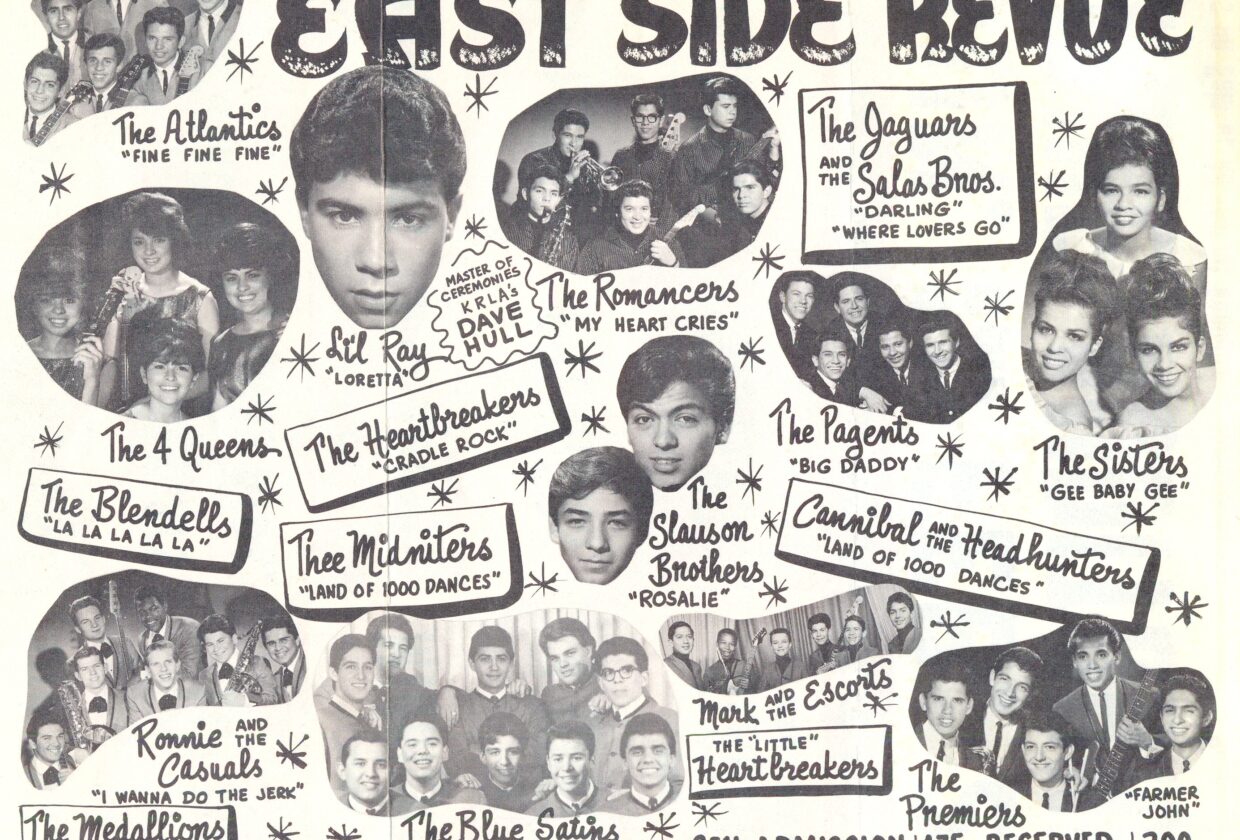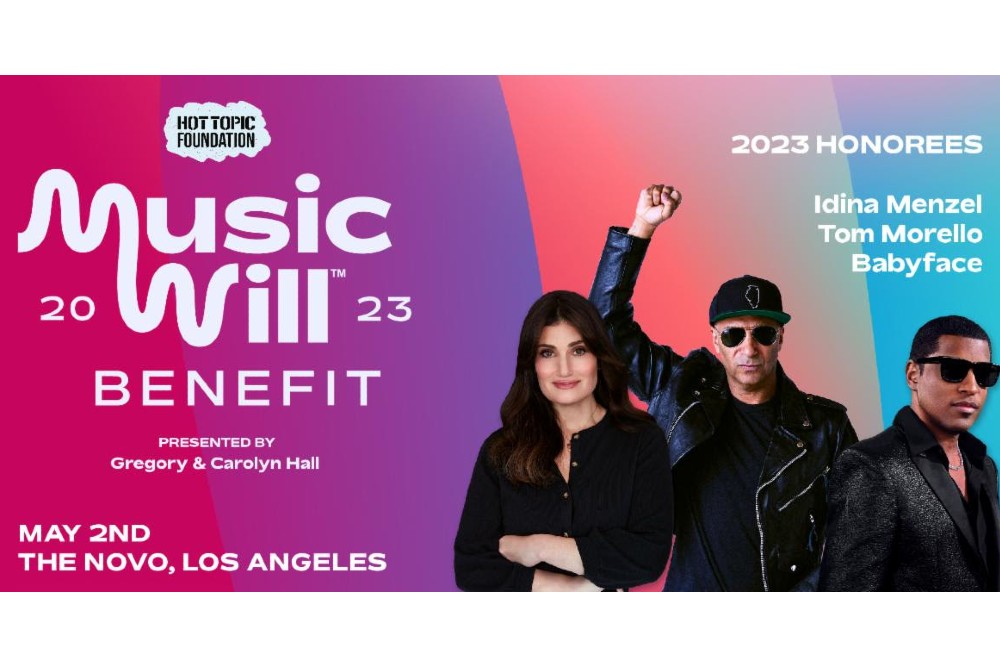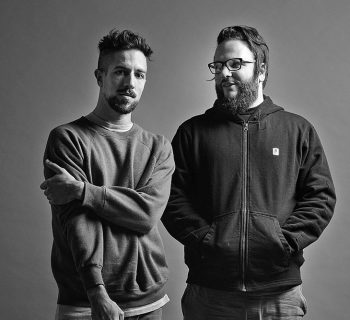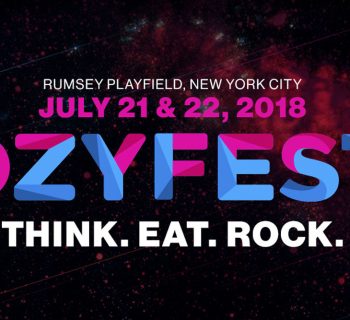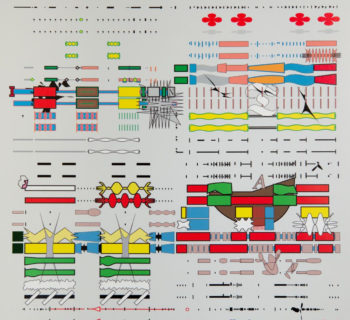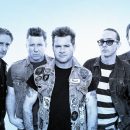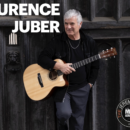Shrine Visual Courtesy of Mark Guererro.
Gene Aguilera, Ry Cooder, Little Willie G. Photo Courtesy of Gene Aguilera
Thee Midniters LP cover Courtesy of Gene Aguilera
This spring and summer of 2023 at select movie theaters and on cable television’s Spectrum SportsNet, filmmaker Stephen DeBro in his sports and music documentary 18th & Grand: The Olympic Auditorium, tells the story of Los Angeles through the distinctive voices of boxers, wrestlers, roller derby skaters and rock musicians who performed at the Olympic Auditorium. The venue opened in 1925.
In 1951, rhythm and blues concerts were held on the premises. During the 1969-1970 time period, Little Richard, Frank Zappa, Mountain, Jack Bruce and Ten Years After were on the marquee. In the eighties and nineties, Public Image Ltd. debuted there, and soon afterwards, monthly concerts were promoted by Gary Tovar and Goldenvoice Productions headlining Dead Kennedys, the Dickies, the Circle Jerks, Bad Religion, Suicidal Tendencies, and X. Music videos for Bon Jovi, Kiss, Air Supply, Janet Jackson, and Rage Against the Machine were produced in the landmark location at the corner of 18th Street and Grand Avenue, just south of the Santa Monica Freeway in downtown L.A.
It’s now the Korean-American Glory Church of Jesus Christ.
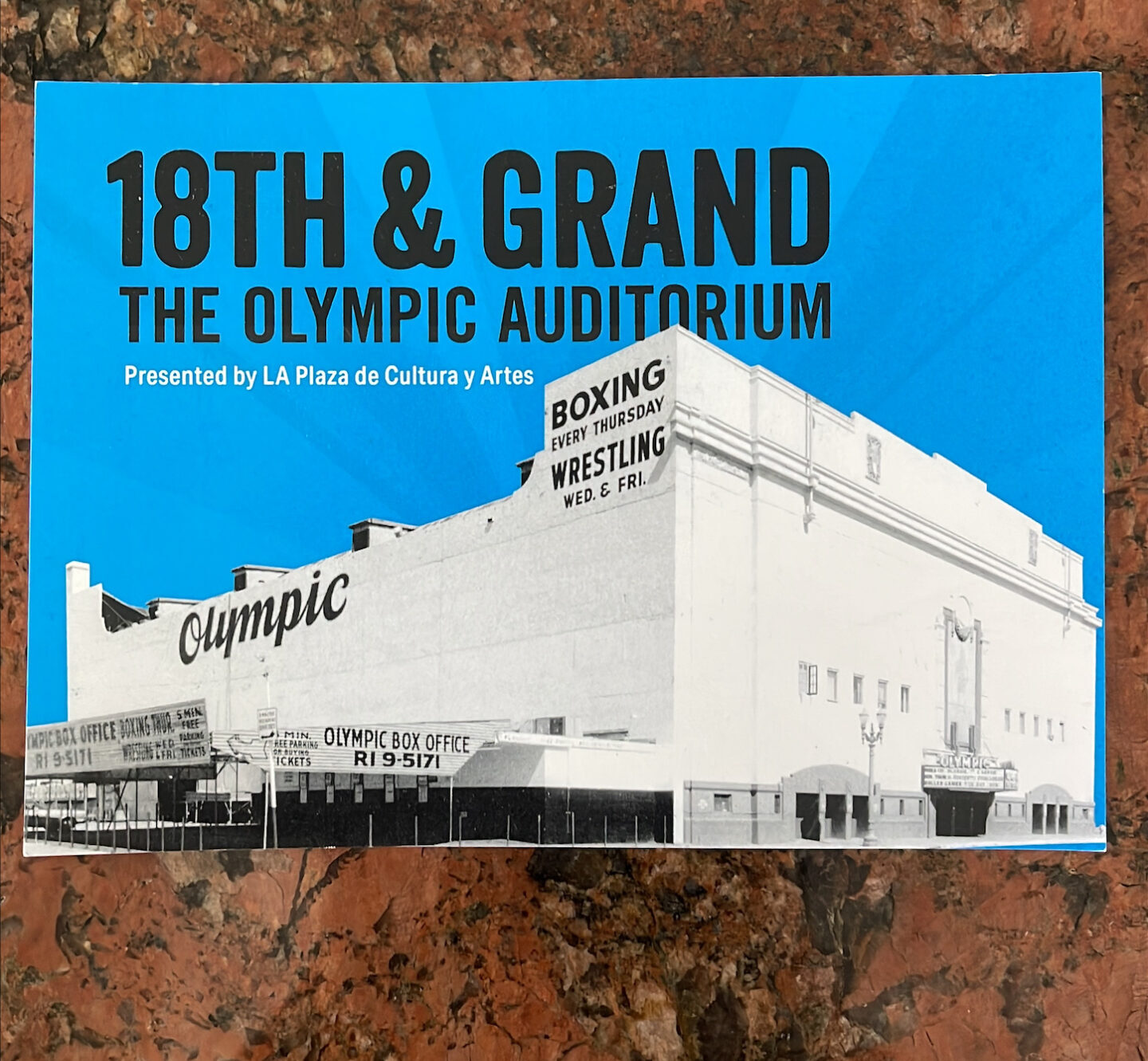
The 18th & Grand: The Olympic Auditorium soundtrack is by War, Shuggie Otis, Charles Wright & the Watts 103rd Street Band, Queens of the Stone Age, Dead Kennedys, the Weirdos, Cannibal & the Headhunters, Quetzal and Jungle Fire (Albert Lopez).
DeBro, author and music/culture historian, Gene Aguilera, along with LA Plaza de Cultura’s Karen Crews Hendon and Esperanza Sanchez, are serving as curators of the museum’s forthcoming August 11, 2023-May 12, 2024, 18th & Grand: The Olympic Auditorium exhibition recounts the 80-year history (1925-2005) of the Olympic Auditorium, the home for visceral entertainment in Los Angeles with artifacts from all facets of the venue’s storied history. The exhibit will be held at La Plaza de Cultura Y Artes Museum, 501 N. Main Street, Los Angeles, California 90012.
18th & Grand: The Olympic Auditorium reminds us about nearby East Los Angeles and adjacent Boyle Heights, east of the Los Angeles River. These two Los Angeles’ Chicano/Mexican-American communities gave us Top Forty music hitmakers, Verve Records’ founder Norman Granz, record producers and songwriters Herb Alpert, Lou Adler, H.B. Barnum, Mike Stoller, as well as musician/deejay Lionel “Chico” Sesma, Black Eyed Peas’ will.i.am, and Gene Aguilera.
Thee Midniters also hail from this vibrant region, who had a monumental instrumental anthem with "Whittier Blvd." in 1965. The Latino group’s recordings and live shows were initially championed by Southern California AM radio deejays Art Laboe, Dick “Huggy Boy” Hugg, Godfrey Kerr, Casey Kasem, Sam Riddle, Dave Hull and “the Real” Don Steele. Wolfman Jack in Chula Vista, Ca. programmed their expeditions on border radio station XERB with 50,000 watts of soul power!
Thee Midniters’ “Jump, Jive & Harmonize” appears on the Rhino Records box set Where the Action Is! Los Angeles Nuggets 1965-1968. The Premiers, another East Los Angeles group, are also heard in this collection with “Get On This Plane.”
Los Lobos’ rendition of Thee Midniters “Love Special Delivery” their Native Sons won them a 2022 Grammy Award for Best Americana Album.
Additional Chicano recording artists from East Los Angeles were on national AM radio playlists. The Premiers had a hit record in 1964 on the Faro Records label with a cover of Don Harris & Dewey Terry’s “Farmer John,” later cut by Neil Young and Los Lobos.
During 1965, Cannibal & the Headhunters were on the charts on the Rampart Records label with their version of American R&B singer Chris Kenner’s “Land of a Thousand Dances.”
The tune has been waxed by Fats Domino, Major Lance, Rufus Thomas, Johnny Rivers, the Walker Brothers, the Alan Price Set, Geno Washington & the Ram Jam Band, Little Richard, the Young Rascals, Ike and Tina Turner, Steve Cropper, and Patti Smith. Jimi Hendrix in his stint backing Curtis Night played the number nightly in New York City at The Cheetah club.
In 1965, Cannibal & the Headhunters were the opening act on the Beatles’ second American tour, and backed up by the King Curtis band.
This decade, scant media attention and documentation exists on the East Los Angeles groups and record producers who created sonic gifts to our ears.
In 2014 I spoke with several musical mainstays of the East Los Angeles world doing research for my book Turn Up The Radio! Rock, Pop and Roll in Los Angeles 1956-1972: Little Willie G. of Thee Midniters, author/boxing scholar Gene Aguilera, musician and East Los Angeles music archivist and podcaster, Mark Guererro.
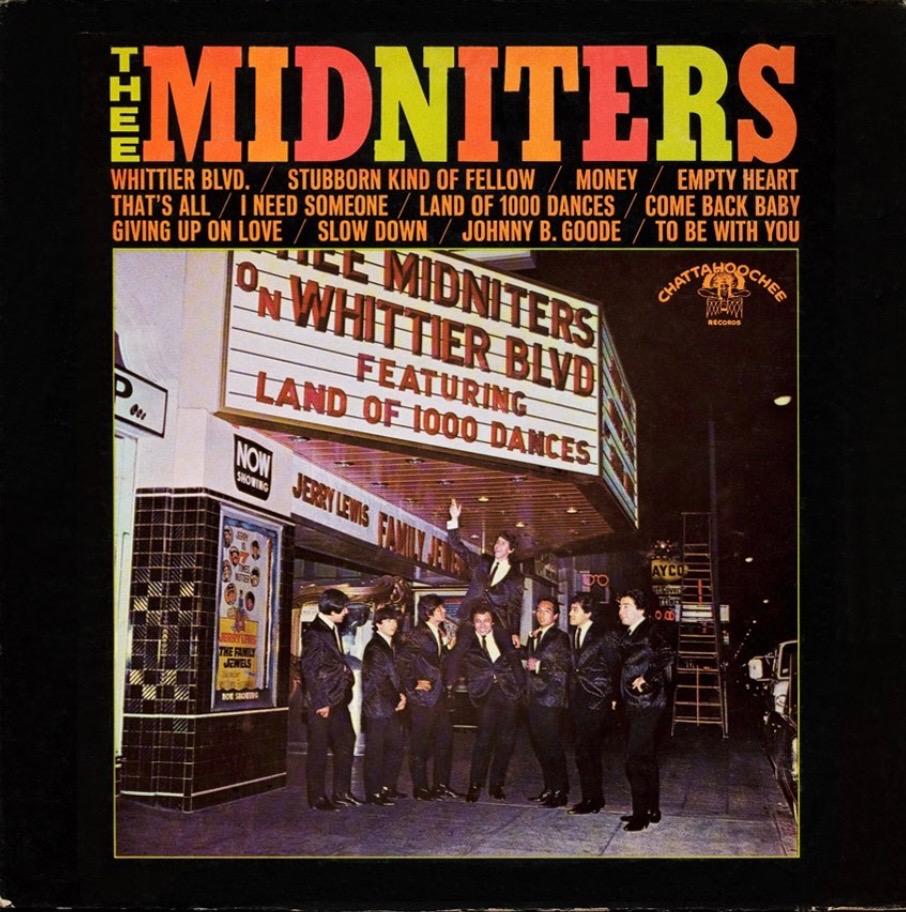
During 2012 I interviewed Thee Midniters’ singer Little Willie G.
Little Willie G.:
Our band name. First, we changed the spelling of “Midnighters.” It could have been our manager, or someone in the band who suggested “Thee” at the front. Perhaps Bobby Cochran, Eddie Cochran’s nephew, was one of our guitar players in that early band. [We said,] “Let’s be ‘Thee Midniters!’ In 1961, it was Benny and Thee Midniters, and we did a battle of the bands at St. Alphonso’s Hall [at East L.A. College]. We employed “Thee” in front of our band name because we wanted to emphasize who we were.
The group recorded in Hollywood on Melrose Avenue, at Studio Masters with Bruce Morgan, who was a godsend. He had worked with the Beach Boys there and was just an incredible guy. “What do you guys want to sound like?” We told him, “We want to sound the way we sound live, when we are playing on a stage or in a backyard.” There’s an energy, vibe, and cohesion with a unity that comes across.
We recorded over twenty-five singles. Across the street from Paramount Pictures in Hollywood. Studio Masters was right next door to Lucy’s El Adobe Café. It was not unusual to go into there and see Leonard Nimoy and William Shatner come in wearing full makeup during their lunch break from filming the Star Trek television series.
After “Land of a Thousand Dances,” the British Invasion happened in 1964, ‘65. At rehearsal, one of our warm-up songs was “2120 South Michigan Avenue” by the Rolling Stones, from their 12 X 5 LP. We needed a follow-up record for Chattahoochee Records. Samy Phillip [later known as Hirth Martinez] wrote a song, “Evil Love.” We went in and did it. Then Bruce Morgan said, “Okay, what’s the B-side?” And we looked at each other. We didn’t even think of that.
I suggested that we cut “2120” as a cover. Then Romeo Prado, the trombone player in the group, said we had to change it, you know. “Let’s put some horns on it.” Romeo is the architect of Thee Midniters’ sound. We also knew the value of instrumentals. Like, there were surf music instrumentals. The instrumental is not a novelty in East L.A. We were following James Brown. “Night Train,” those type of things. “Harlem Nocturne.”
The street Whittier Boulevard became a cruising mecca. They started coming from Orange County and the San Fernando Valley, and from the beach cities. Our audience was everybody. They’d come from San Pedro, Hermosa, Manhattan Beach, Van Nuys, Pacoima. They would come to Whittier Boulevard partly because of our song, but we also had three things in common: music, cars, and girls. You could find all that on Whittier Boulevard.
We weren’t throwing beer bottles at each other as the highway patrol and the sheriffs tried to make it out to be when they started to shut Whittier Boulevard down. There was actually an article in the Los Angeles Times where they blamed it on Thee Midniters’ “Whittier Blvd.” song. There was always white fear. Before Mayor Sam Yorty, it was Chief Parker. This goes back many years.
We were a very versatile band. We added percussion and a horn section, before Chicago and Blood, Sweat and Tears. Johnny and the Crowns had a full horn section, but they never got recognized. If the audience was predominantly black, we could knock out some R & B like anybody else, like “Sad Girl” and “The Town I Live In.”
We played everywhere. We were able to go to Thousand Oaks and to Hawthorne for the Drop. We performed at the Rendezvous Ballroom on Balboa Island with Dick Dale. We toured a short season with Paul Revere and the Raiders in Idaho, Oregon, and Washington.
Thee Midniters played with the Turtles at the Rose Bowl. We used to hang out with the Lovin’ Spoonful whenever they came to town to play the Trip. Also, Them with Van Morrison. We actually took Them and Steppenwolf to East L.A. and the Big Union Hall in Vernon. Bought them a quart of vodka. We hung with the Young Rascals every time they were in town. Eddie Brigati of the group would come to East L.A.
We did the Teenage Fair in Hollywood on Sunset Boulevard, and the audiences were all white kids. They were looking at us like we were aliens from outer space, some of them making really derogatory comments. “Where are your burritos?” We would hear stuff like that and ignore it, because we knew, as soon as we started playing, they [would] change their minds about us. That was our attitude. As soon as the music hit, they gravitated towards us. Sometimes they couldn’t get us off the stage. They kept calling us back.
Going to Hollywood was utopia for us. We grew up color-blind. Okay, even when the Chicano movement started, and the Brown Berets and those political factions would come and tell us that we were being exploited by the white man and whatnot, we never felt that. We were working. We were recording. We were sitting with record company executives. What they were saying to us didn’t register. We weren’t experiencing that, man—their whole concept and portrayal of what was going on in the world. We would hear them out and then have discussions about it. We didn’t get political with it. We took it someplace else after guitarist George Dominguez said, “I never knew we had it so bad.” George, drummer Danny LaMont, and I even wrote a tongue-in-cheek song, “I Never Knew I Had It So Bad,” for our third LP, Unlimited, on Whittier Records.”
East Los Angeles native Gene Aguilera’s history in the music and recording world has been featured in the Los Angeles Times, L.A. Weekly, and Goldmine Magazine. Lyricist, rhythm guitarist, and BMG writer Aguilera co-wrote “Poor Man’s Shangri-La,” the opening track on Ry Cooder’s Grammy-nominated album Chavez Ravine (with Cooder and Little Willie G.), and “El Corazon Mexicano” with singer/songwriter Danny O’Keefe. Other Aguilera original songs have appeared on the FOX TV show “Space: Above and Beyond,” HBO’s movie “Cadillac Ranch,” and on albums by The Blazers, Little Willie G., and Thee East L.A. Philharmonic. Aguilera is listed as Associate Executive Producer on the The Paladins LP Slippin’ In and Creative Consultant on albums by East L.A.’s Thee Midniters: Thee Complete Midniters, Greatest, and In Thee Midnite Hour.
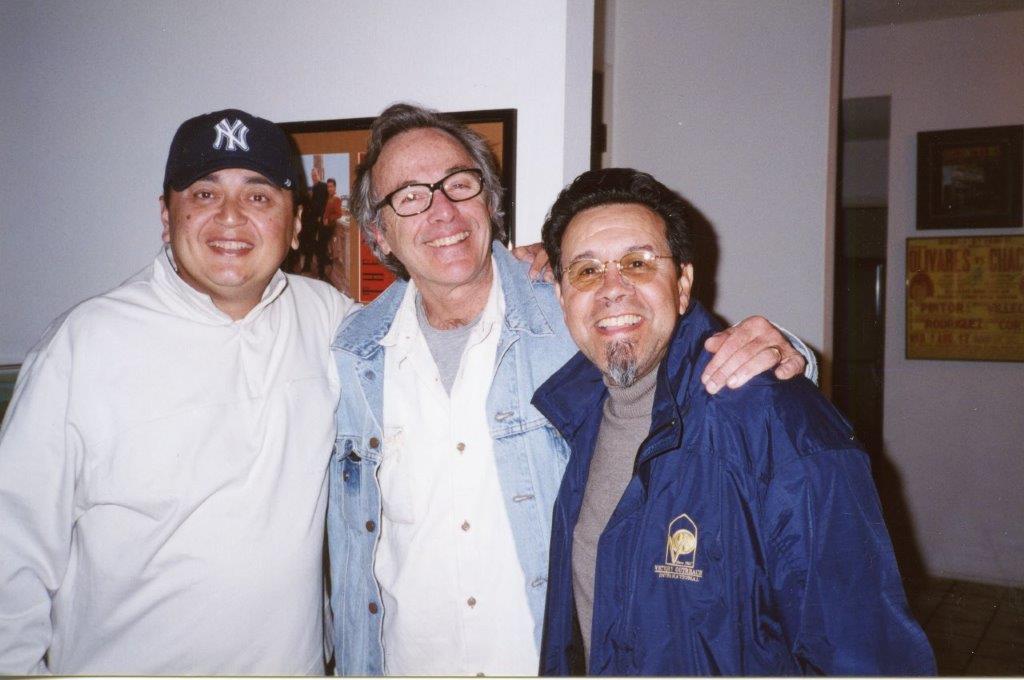
Aguilera has been acknowledged on recordings by Los Lobos, Cannibal & the Headhunters, the Premiers, El Chicano, and various East L.A. musical compilations. Gene is a USC graduate and hall of fame boxing book author Aguilera has written three books for Arcadia Publishing: Mexican American Boxing in Los Angeles, Latino Boxing in Southern California, and Lost Stories of West Coast Latino Boxing. His first title is currently listed by bookauthority.org as #56 on the “100 Best-Selling Boxing Books of All Time” as featured on CNN and Forbes.
Aguilera, known as “The Duke of Boyle Heights,” appears and is credited as Associate Producer in 18th & Grand: The Olympic Auditorium Story—the documentary by director Steve DeBro.
Earlier this century I interviewed Gene Aguilera.
It's been a nagging ache in my side, that the East Side Sound during its golden age of the 50's, 60's and 70's is almost never mentioned in the same breath as the Hollywood music scene. It's like the suits never wanted to cross the bridge to East L.A. during those turbulent times. Thee Midniters, even with a hit single in tow, never got booked at The Whiskey A Go Go probably due to cultural insecurities and insensitivities (combined with naïve management). The East L.A. sound (which combined doo-wop, soul, and The British Invasion) definitely shaped and influenced the musical landscape of the greater Los Angeles area.
The soulful, horn-drenched influence of Thee Midniters (who preceded brass bands as Chicago Transit Authority and Blood, Sweat & Tears) were one of the first groups to utilize horns as the driving force in a rock 'n' roll context. I call East L.A….the forgotten village. That is the perfect name for this colorful barrio that developed its own musical style, burst into the national scene in 1964 with several Billboard Top #100 charting hits, yet reviewers and documentaries of rock 'n' roll have traditionally turned a blind eye towards our musical contributions.
(A native of Los Angeles, Harvey Kubernik is a San Diego State University Aztec. The Aztecs were a Mesoamerican culture in central Mexico during the 1300 to 1521 period. Harvey’s devotion to the music birthed and produced in Los Angeles and East Los Angeles during 1956-1972 were initially established from the records heard on his home and transistor radios at Coliseum Street Elementary School, El Marino, and Muirfield Elementary School in Crenshaw Village. Kubernik is a graduate of Fairfax High School, and briefly attended Los Angeles City College, before graduating West Los Angeles College and SDSU.
He is the author of 20 books, including 2009’s Canyon Of Dreams: The Magic And The Music Of Laurel Canyon and 2014’s Turn Up The Radio! Rock, Pop and Roll In Los Angeles 1956-1972. Sterling/Barnes and Noble in 2018 published Harvey and Kenneth Kubernik’s The Story Of The Band: From Big Pink To The Last Waltz. In2021 they wrote Jimi Hendrix: Voodoo Child for Sterling/Barnes and Noble. Otherworld Cottage Industries in 2020 published Harvey’s Docs That Rock, Music That Matters.
Kubernik’s writings are in several book anthologies, including The Rolling Stone Book Of The Beats and Drinking With Bukowski. Harvey wrote the liner notes to the CD re-releases of Carole King’s Tapestry, The Essential Carole King, Allen Ginsberg’s Kaddish, Elvis Presley The ’68 Comeback Special, The Ramones’ End of the Century and Big Brother & the Holding Company Captured Live at The Monterey International Pop Festival.
During 2010, Kubernik served as Consulting Producer on director Morgan Neville’s Troubadours: The Rise of the Singer-Songwriter, Carole King/James Taylor.
In 2020, Harvey served as a consultant on the 2-part documentary Laurel Canyon: A Place in Time directed by Alison Ellwood.
During 2006 Harvey spoke at the special hearings initiated by The Library of Congress held in Hollywood, California, discussing archiving practices and audiotape preservation. In 2017 Harvey Kubernik appeared at the Rock and Roll Hall of Fame in Cleveland, Ohio, as part of their Distinguished Speakers Series.
Harvey was interviewed for the 2013 BBC-TV documentary on Bobby Womack Across 110th Street, directed by James Meycock. Bobby Womack, Ronnie Wood from the Rolling Stones, Regina Womack, Damon Albarn of Blur/the Gorillaz, and Antonio Vargas are spotlighted.
In 2019, Harvey was an on-screen interview subject for director Matt O’Casey on his BBC4-TV digital arts channel Christine McVie, Fleetwood Mac’s Songbird. The cast includes Christine McVie, Stan Webb of Chicken Shack, Mick Fleetwood, Stevie Nicks, John McVie, Christine’s family members, Heart’s Nancy Wilson, Mike Campbell, and Neil Finn.
In 2023, Harvey, photographer Henry Diltz and authors Eddie Fiegel, Barney Hoskyns and Chris Campion were filmed by French director France Swimberge for her Mamas & Papas documentary. Broadcast scheduled on the European arts television channel, Arte. In addition, Kubernik is serving as a consultant for her film.
Harvey was lensed as an interview subject for the 2013 BBC-TV documentary on Bobby Womack Across 110th Street, directed by James Meycock. Bobby Womack, Ronnie Wood from the Rolling Stones, Regina Womack, Damon Albarn of Blur/the Gorillaz, and Antonio Vargas are spotlighted.
In 2019, Harvey was interviewed for director Matt O’Casey on his BBC4-TV digital arts channel Christine McVie, Fleetwood Mac’s Songbird. Cast: Christine McVie, Stan Webb of Chicken Shack, Mick Fleetwood, Stevie Nicks, John McVie, Christine’s family members, Heart’s Nancy Wilson, Mike Campbell, and Neil Finn.

